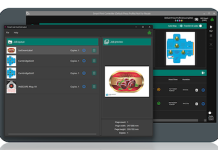Customers’ patronage, and their money, become even more important when you realise that it will cost you 10 times more to attract new customers than it will to retain current customers.
For example, if 50 customers leave you because you didn’t satisfy their complaints, it would have cost you around R774 ($50) each for a total of R38,706 ($2500). Now you have to spend R154,826 ($10,000) or more in advertising to attract customers who will replace those you have lost. You are backsliding in the number of customers who do business with you and you are affecting your future revenue.
Business owners and employees face a special challenge when it comes to dealing with customers who are unhappy with your service, your products, your lack of attention, or a myriad of other things. How you handle those customers can have a direct impact on your business. If you don’t handle them well, customers will leave you, and take their money with them.
It is imperative that employers train employees to deal with irate customers. When confronted by complaining customers, employees must exhibit what I call the four Cs:
– Compassion.
– Calmness.
– Confidence.
– Competence.
Employees must also take these steps:
Listen carefully. Let customers tell their stories and make eye contact as they do so. Pay attention to what they have to say. Sometimes that is all an irate customer really wants: someone to express an interest in what they have experienced and what they need.
Put yourself in the customer’s place. Be empathetic. How would you feel if you had experienced a similar problem? When you put yourself in the customer’s shoes you can better understand their state of mind, what they might be willing to accept, and what you can do to turn the entire encounter around.
Ask questions. When you do this, it lets customers know that you care about them and their problems. Asking questions creates a dialogue that you can build on. Questions should be open-ended, not those that can be answered with a simple ‘yes’ or ‘no’. This has a calming effect on customers and reduces the chance of the situation escalating. (As a side note, this also works when you are dealing with an unhappy boss, coworker, spouse, family member, or friend.)
Suggest alternatives. As you are asking questions, you can begin to formulate suggestions that will address the customer’s concerns. If the customer rejects a suggestion, don’t defend it. Instead, offer other steps you can take to remedy the situation. This gives customers a choice and lets them now that you sincerely care about their problems.
Apologise. Say you’re sorry. Own the problem, even if you weren’t directly responsible for it. This puts you in a good position to act in a manner that customers will perceive to be in their best interest. Saying, ‘I’m sorry,’ carries a lot of weight in a difficult situation because it illustrates your ownership of the problem and will help you to move past the emotion of the moment and on to practical solutions.
Solve the problem. Use everything you have learned during your conversation with the customer to solve the problem quickly and efficiently. At this point, you want to see the situation resolved as much, if not more, than the customer does.
Once you have solved the customer’s problem, it’s time to take care of yourself. Dealing with irate customers is stressful. Decompress by taking a break or going for a short walk to clear your head. Then congratulate yourself for a job well done!
John Tschohl is a professional speaker, trainer, and consultant. He is the President and founder of Service Quality Institute with operations in over 40 countries. He is considered to be one of the foremost authorities on service strategy, success, empowerment and customer service.
SERVICE QUALITY INSTITUTE
www.customer-service.com















